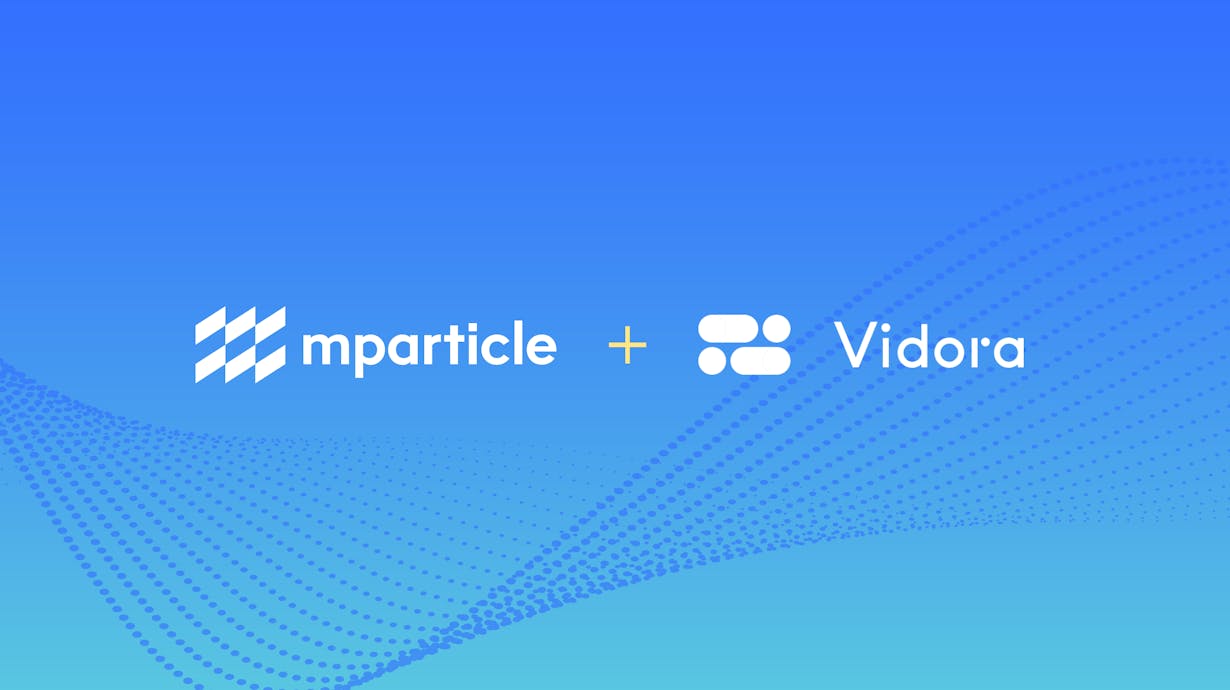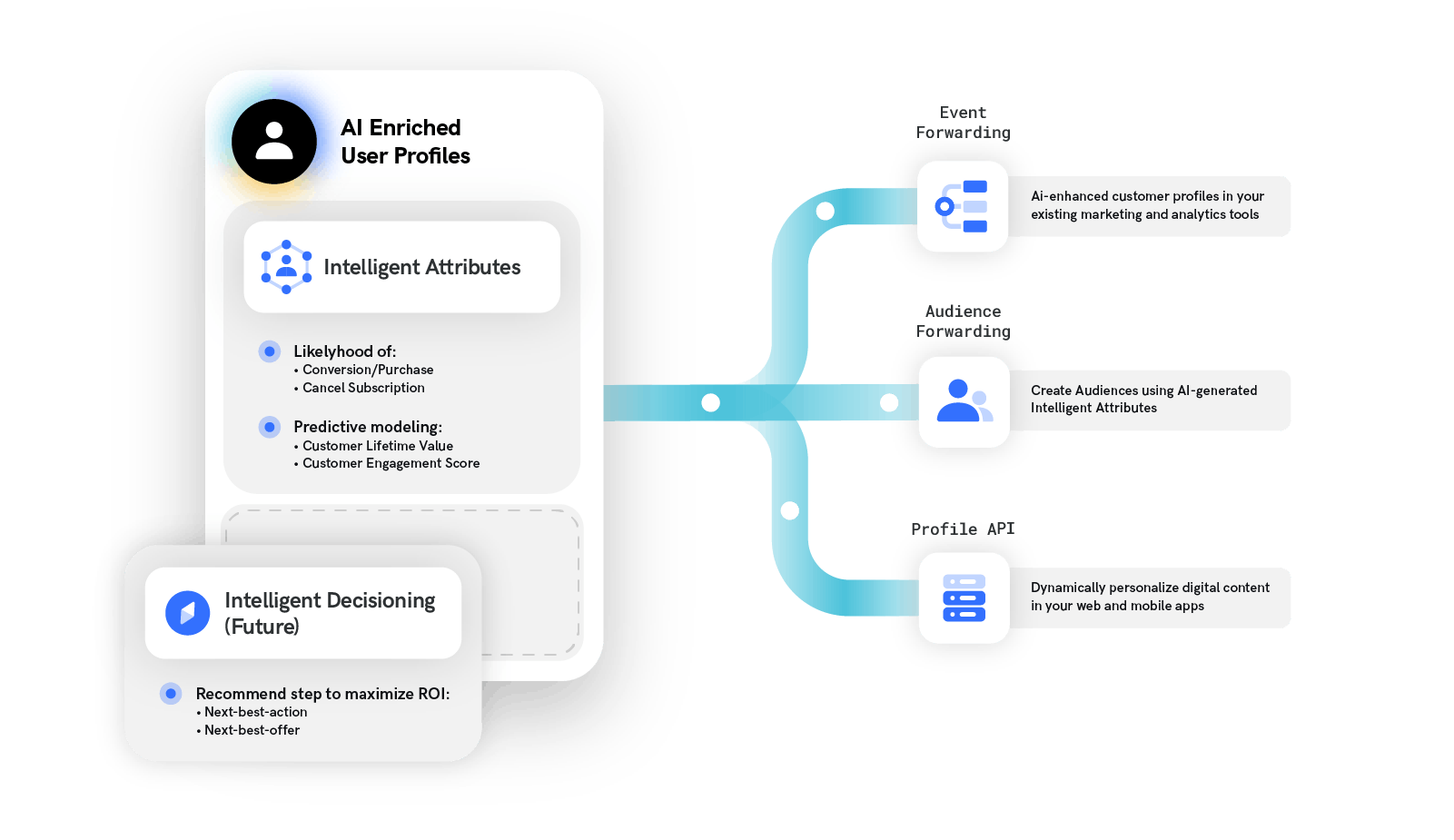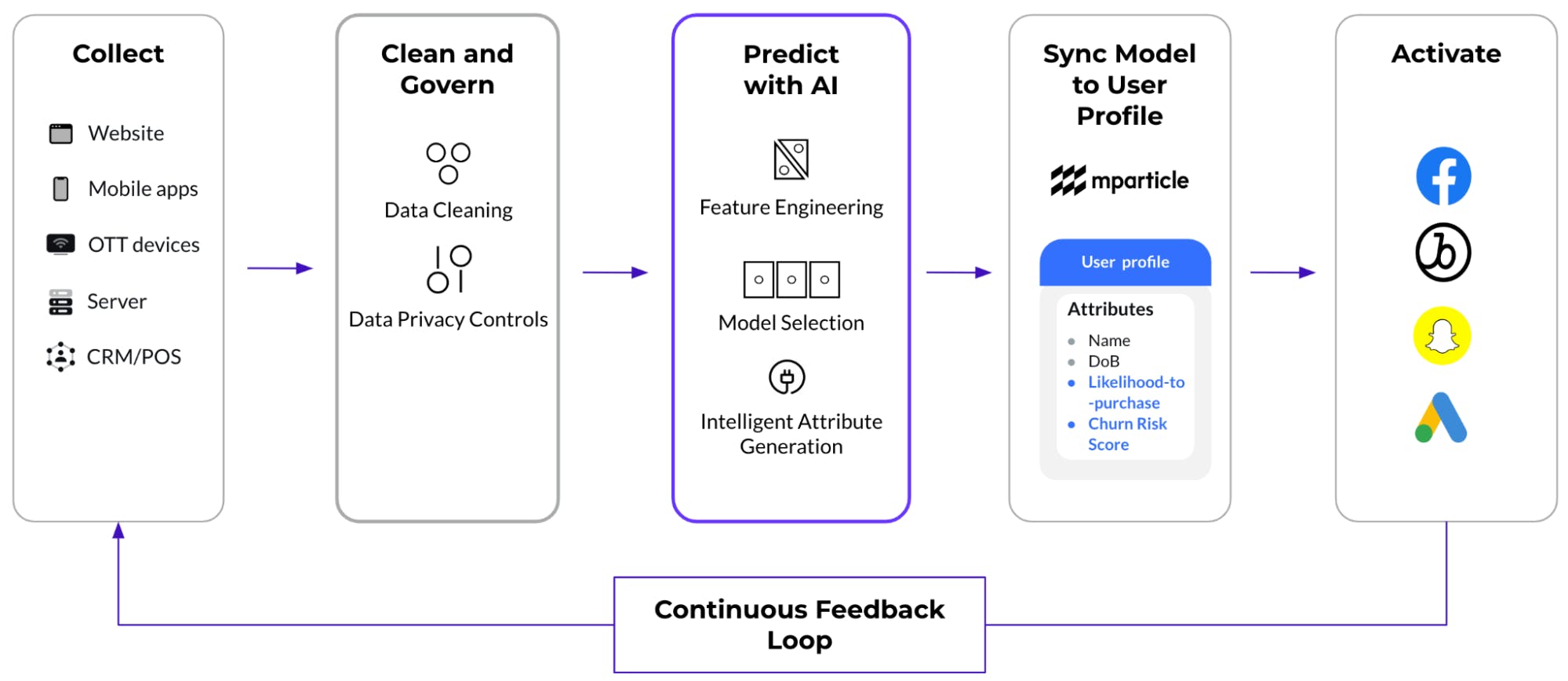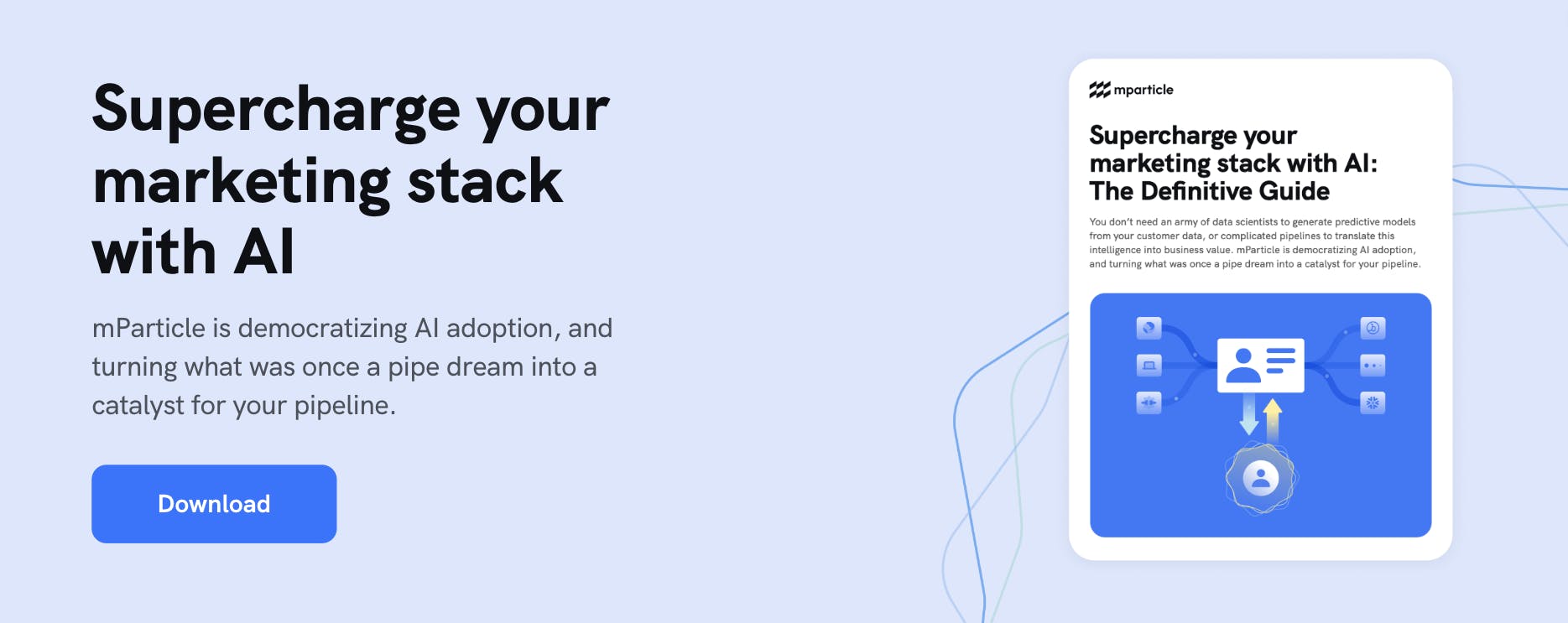mParticle acquires Vidora, AI personalization platform for customer data
Vidora’s Cortex platform enables brands to predict future user behavior, and leverage those insights in their marketing tools to proactively take action.

At mParticle, our vision is to help companies accelerate time to data value. Over the past eight years, we’ve been helping brands solve foundational customer data challenges centered around data quality, governance, and connectivity. Laying a solid first-party data foundation is the prerequisite for effective segmentation, audience insight, and activation of that data. And that’s why innovative companies of all sizes have selected to implement mParticle as their customer data infrastructure.
But in order to deliver market-leading customer experiences, brands need to be able to get more out of their data. Traditionally, customer-centric teams are limited to making decisions based on historical context, such as whether a customer has completed a purchase. With access to AI insights, however, teams can deliver personalization based on future predictions, such as whether a user is likely to convert or is at risk of churning.
This is why I’m excited to announce that mParticle has acquired Vidora, an AI personalization platform for customer data. With our combined offering, teams can now easily create AI models and deploy those insights to any mParticle’s 300+ integrated tools without data science expertise.
To learn more, please join Vidora Co-Founder and CEO Alex Holub and mParticle Chief Product Officer Chee Chew on August 16th as they sit down for a fireside chat focused on our shared vision and roadmap.
Introducing mParticle Intelligent Attributes, powered by Cortex
The mParticle and Vidora teams have been hard at work integrating the two products together in the lead up to this announcement. We’re thrilled to reveal that customers can immediately take advantage of our initial release of mParticle Intelligent Attributes, powered by our AI called Cortex.
Intelligent Attributes are AI-generated predictive models of user behavior that is likely to happen, as compared to Calculated Attributes, which are computed from actual historical data. An example of a Calculated Attribute is “Average Order Value”, which is defined as the sum of all total purchase values, divided by the number of purchases, over a specified timeframe.
What can you do with Intelligent Attributes? There’s a lot to be excited about:
- Predict future events, such as likelihood of conversion / churn risk.
- Compute numeric values such as Predictive Customer Lifetime Value based on models trained by purchasing behavior from the entire customer base.
- Use classification to determine how likely each user is to belong to a certain group.

For each of these Intelligent Attributes, you can create Audiences and use them as criteria with conditional parameters. For example, if you wanted to target the top 80% of users that are most likely to purchase, you can set Audience criteria to likelihood_to_purchase_percentage >= 80.
Intelligent Attributes can also be forwarded as custom user attributes to downstream tools, where they can be leveraged for personalization. For example, a marketer can conditionally present two different offers in an email message by applying conditional logic on a user’s Intelligent Attribute (for example, in Braze using Liquid Operators).
Additionally, with mParticle’s Profile API, product teams have programmatic access to Intelligent Attributes. This means they can dynamically serve web and mobile content based on the user.
Streamline your website integrations
Learn which third-party integrations you could replace with a single SDK by adopting mParticle.

Enable self-service, transparent AI
One of the biggest challenges to AI adoption is the lack of data science resources. In order for brands to adopt AI at scale, it has to be accessible to more teams by lowering the technical bar required to get started. With Cortex, any business user can create Intelligent Attributes in just a few clicks. This means marketers and product managers can realize value within days, not weeks, and data science teams can focus on other priorities.
But AI can’t just be a black box, or it simply won’t be trusted. It’s important to understand the process of how AI models are generated and explain the decisions that are made. For example, when predicting churn, it helps to go beyond who is likely to churn and understand the reasons why someone is more likely to churn. This allows you to build a strategy to address the cause to alleviate the problem over the long term.
The good news is that Cortex does exactly that. For every Intelligent Attribute, Cortex exposes the features, or the measurable properties, that the AI uses for analysis. You can see how they are ranked by importance to understand which ones contribute most to the outcome you’re measuring.
Operationalize the end-to-end workflow

Putting AI into action requires a solid data foundation that can seamlessly move data between data sources, the AI platform, and then to downstream tools, where those AI insights (Intelligent Attributes in this case) can be used to improve personalization. Typically, this requires data engineering teams to build data pipelines to integrate various systems or manually move the data via batch export / imports.
With mParticle and Cortex, you can automate the entire end-to-end workflow to operationalize AI, which encompasses these steps:
- Ingest data using mParticle SDKs or Events API (if the model has just been created, this will require a one-time replay of historical events)
- Ensure the data conforms to the expected schema using mParticle Data Quality management features
- Using a mParticle → Cortex AI Event integration, forward the data to Cortex, where features are created, and the model is trained and Intelligent Attribute is created
- Using a Cortex AI → mParticle Feed integration, the Intelligent Attribute is sent back as a user attribute
- Forwarding user profiles that have been enriched with Intelligent Attributes to all of your marketing engagement and analytics tools
- Collect engagement data back from these tools
Once set up, you’re good to go. As new data is captured, the pipelines are updated accordingly. No need to worry about models getting stale with old data.
Here's a short video walkthrough of how to use mParticle and Cortex to predict user churn.
What’s next?
Intelligent Attributes is the first of many use cases available with Cortex’s predictive modeling and decisioning capabilities. Stay tuned for additional AI-powered capabilities!
To learn more about how you can get started with mParticle and Cortex today, as well as what's coming in the near-future, tune in to our fireside chat on August 16th, hosted by Vidora Co-Founder and CEO Alex Holub and mParticle Chief Product Officer Chee Chew!




